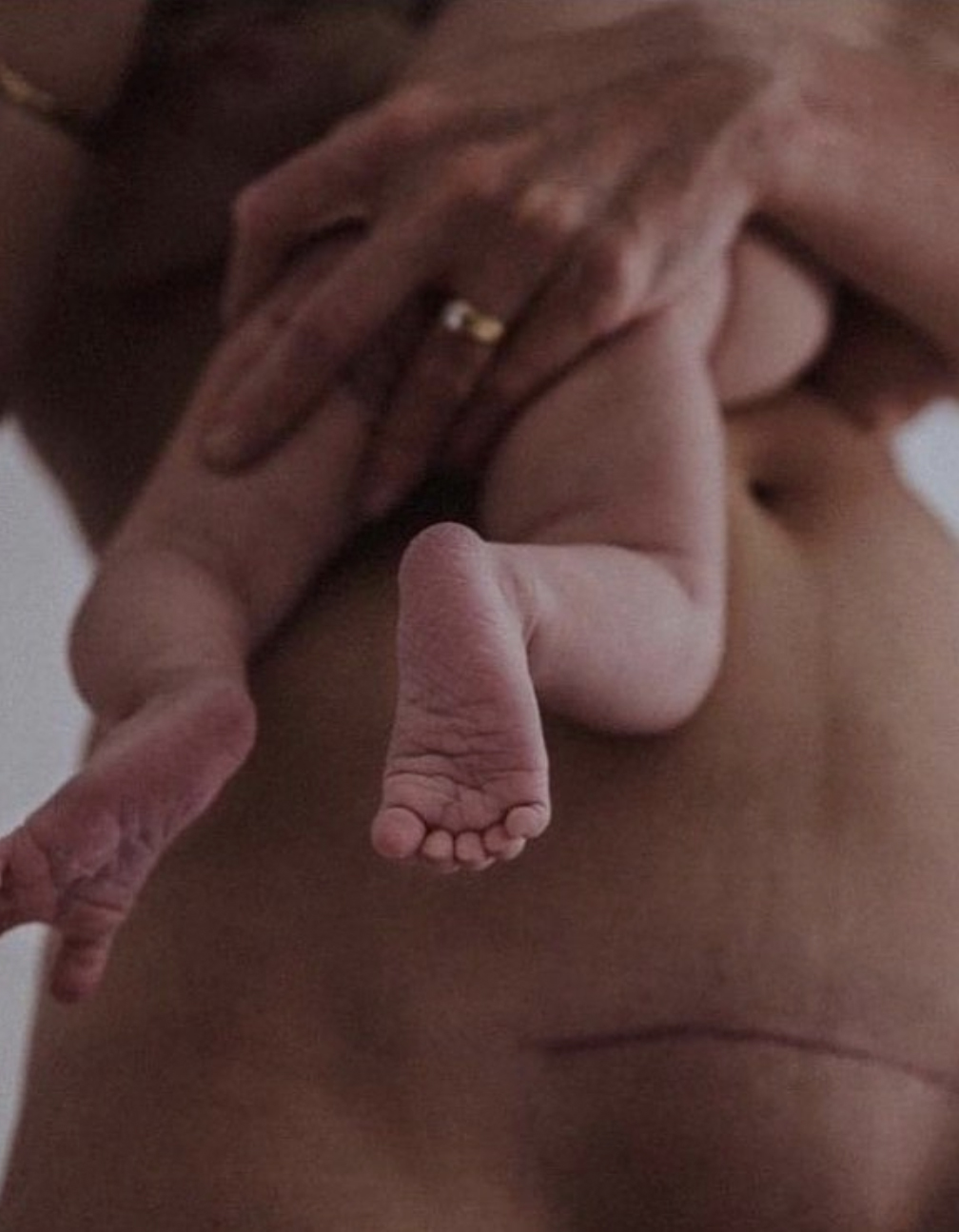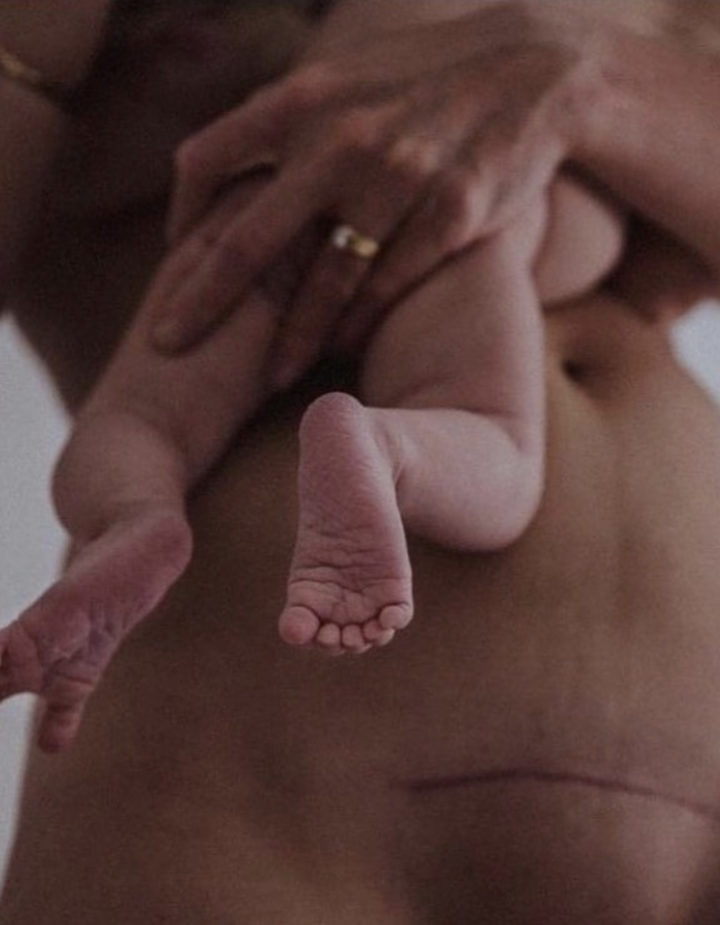Parijat Deshpande is an author, speaker and the CEO of a global, boutique company dedicated to reducing pregnancy complications and ending preterm birth. On a mission to end the high-risk pregnancy crisis, she has served and supported hundreds of women through her programs, one-on-one work and bestselling book, Pregnancy Brain: A Mind-Body Approach to Stress Management During a High-Risk Pregnancy.
When I first began thinking about pregnancy, birth trauma was far from my mind. I had heard the phrase, I knew what it entailed, but I never thought it would happen to me.
Months after my son was discharged from the NICU, my husband encouraged me to take an afternoon off and get a massage. Without needing much coaxing, I booked an appointment and happily went for a much-needed afternoon of relaxation. The massage was luxurious, and I felt like multiple elephants were being lifted out of my back. Then, the massage therapist asked me to lie on my back. I turned, keeping my eyes closed, ready for a scalp massage that could ease some of my postpartum headaches. The minute she put her hands on my forehead, I shot up on the massage table, eyes wide in fear, whole body tense, tight, and uncomfortable. She had just triggered a somatic memory of my time right before delivery, when my mom and husband would rub my head while I struggled through the awful side effects of magnesium sulfate, a medication I was on to stop my preterm contractions.
Though I had spent years training in clinical psychology, somatic memories and birth trauma were not something we covered extensively, if at all. This experience showed me that even when the “traumatic event” is over, even when baby is home and safe, it doesn’t mean the trauma is over.
So What Is Birth Trauma?
Birth trauma is defined as any experience that a birthing person has at the time of labor and delivery that feels unsafe or threatening and is encoded as such in the body. When we’re unable to restore physiological safety after the moment of threat passes, the survival stress gets trapped inside the musculature, fascia, joints, and sensory systems where it can later manifest itself in various ways for weeks and even years following the experience.
However, some birthing people don’t realize their experience was indeed birth trauma. It’s easy to minimize birth trauma because we are often told by loved ones and professionals that if everything turned out “fine” then it couldn’t have been traumatic. However, someone who had a low-intervention home birth with a full-term healthy baby could still experience birth trauma if the experience around labor and delivery was encoded as threatening or unsafe. That’s why this definition of birth trauma is so important: it does not rely on the type of event that has happened to a birthing person or the outcome of labor and delivery but instead focuses on how an experience is encoded in an individual’s body.
By defining birth trauma accurately we can give space and acknowledgment to every person’s experience and highlight the fact that trauma is defined by the person who experienced it and not by anyone else who was in that room.
Identifying Your Birth Trauma
Many people question whether what they experienced counts as birth trauma, often turning to experts or loved ones for validation. The truth of the matter is, if it has crossed your mind that what you experienced might have been traumatic, that counts. End of story. You don’t have to justify it with assessments, diagnoses, or validation from someone outside of you. If it felt traumatic to you, then it was traumatic for you. No one has the right to question that.
If you’re still unsure, you can sometimes identify birth trauma by the type of effects you’re experiencing afterward. Unresolved birth trauma can manifest itself in many different ways, including:
- Nightmares and flashbacks
- Avoidance of certain sensory experiences that bring up the somatic memories of that time. For example, NICU parents might avoid the smell of certain hand sanitizers, other people might avoid certain songs that were playing during delivery, you might avoid driving past the hospital where you drove before you gave birth, or you might find you can’t be around certain foods that you ate right before or right after delivery.
- Feelings of disconnection and numbing. You might feel disconnected from the world or your child or feel like you’re walking through life underwater.
- Micromanagement of details. You might feel intense pressure to stay on top of every single detail of your life or your child’s life, finding it difficult to delegate tasks or trust caregivers.
- Quick and intense rage. You might find yourself going from 0 to 60 quickly and often, set off by anything from sounds and lengthy to-do lists and making mistakes to unmet expectations of yourself and others.
- Medical issues. You might find yourself dealing with health issues, many of which don’t have medical explanations. The physiological changes that come with living with traumatic stress are tied to a long list of medical issues including (but not limited to) migraines and headaches, hormone imbalance, chronic pain, autoimmune diseases, insomnia, hypertension and so much more.
Because traumatic stress shows up in a multitude of ways, it’s so important to recognize early on when an experience has been encoded as traumatic so that we can get ahead of it and you can experience relief sooner. If you think it was traumatic and you’re living with these health issues and manifestations of birth trauma, you deserve to take it very seriously.
Resolving Your Birth Trauma
Resolving birth trauma requires us to get our bodies to a place where it can safely complete the stress physiology cycle to release the survival stress that became trapped inside your body at the time of birth.
1. Acknowledge and Validate
Start first by acknowledging and validating that what you experienced was traumatic. When you can validate this for yourself, without needing to justify what you went through, you’re going to be much more open to what it takes to release that trapped survival stress. You’ll also be able to move through the process of releasing much more quickly because you have validated for yourself that you experienced birth trauma and that you deserve to heal.
2. Refuse Blame.
Accept that what you experienced and the subsequent manifestations of the birth trauma aren’t your fault. You did not cause it. You have done nothing wrong and you are not broken.
3. Try a Somatic Healing Approach
When you’re ready to release the trapped survival stress, it’s critical to take a somatic, body-based approach; this isn’t something you can “think” your way out of. Since the trauma occurred at a cellular level, we have to tap into the whole body and sensory experiences to start releasing the trapped survival stress. This process looks different for every single person so it’s best done with the help of a somatic professional who can create a customized approach that fits your unique experience and your current health situation to ensure the healing process is safe for you.
No matter the details surrounding your birth trauma, you deserve to give yourself validation that it was indeed traumatic and then pursue the whole-health support you need to release it from your body. You are not at fault, and you deserve to heal.









